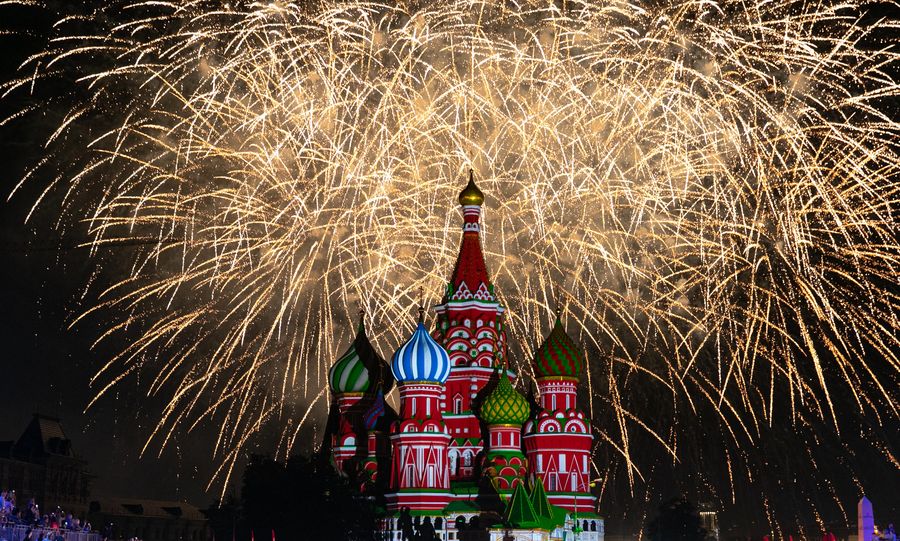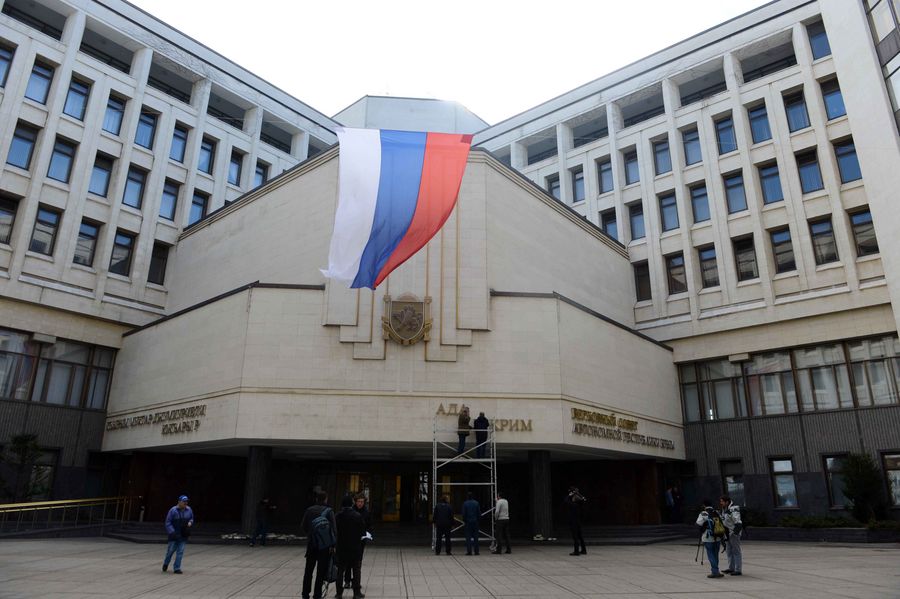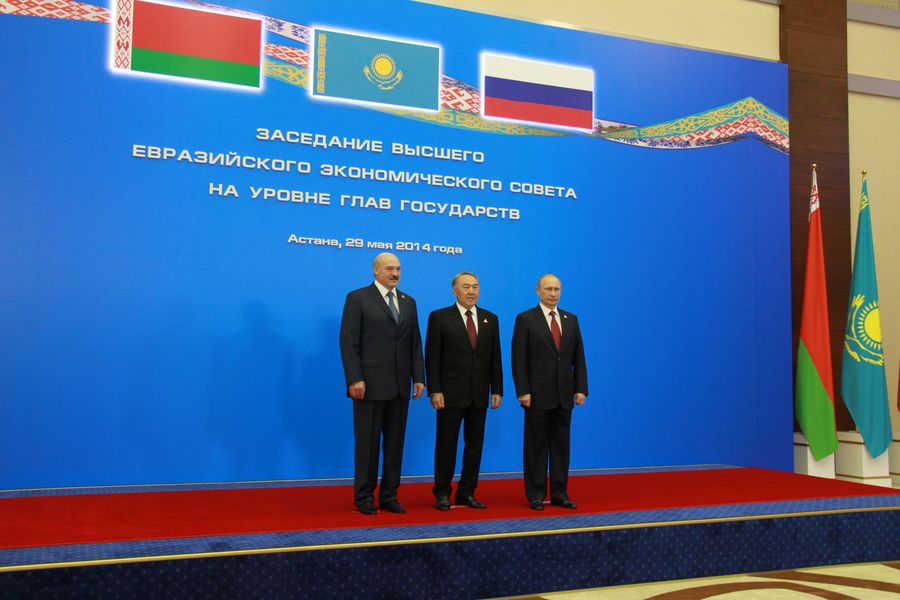
Fireworks are seen during the opening day of "Spasskaya Tower" International Military Music Festival in Moscow, Russia, on Aug. 23, 2019. (Xinhua/Bai Xueqi)
BEIJING, Aug. 31 (Xinhua) -- The vicissitude of the Union of Soviet Socialist Republics (USSR) and the rise of Russia have become a geopolitical drama over the past three decades. During this time, Russia has been trying to chart a path of development suited to its needs and explore opportunities in a new big-power game.
How has Russia's past informed its present? And what can we expect from Russia in the coming years?
DISILLUSION
Following the dissolution of the Soviet Union in 1991, Russia had illusions of gaining financial aid from the West, before it was disillusioned by the eastward expansion of the North Atlantic Treaty Organization and the Europe Union, which "stole" its former allies.
On New Year's Eve 1999, Russia's first post-Soviet president Boris Yeltsin delivered his surprising resignation and handed off power to his successor Vladimir Putin, asking him to "take care of Russia."
However, things didn't always go well for the revival of Russia, the Cold War "loser."

Workers dismantle the Ukrainian signs on Crimean Parliament building in Simferopol, the Republic of Crimea, March 18, 2014. (Xinhua)
In 2014, Russia withdrew from the Group of Eight due to disagreements over the crisis in Ukraine, which also led to international sanctions imposed by several countries against Russia.
Earlier in August of this year, Washington officially quit the Intermediate-range Nuclear Forces Treaty, tearing up the arms control agreement signed by the United States and the USSR in 1987.
Putin has said Russia remains open to any proposals and initiatives strengthening universal security in the interests not only of Russia but of the United States and the whole world.
Nonetheless, the West has never overcome its Cold-War mentality and rejected equal dialogue with Russia.
To return to national glory, Russia had to change its foreign policy from "compromise in exchange for compassion" to "cooperation and competition for self-development."
EASTWARD TURN
As Russia's Far East Region shares a strong economic complementarity and great potential for cooperation with partners in the Asia-Pacific, a strategy of "turning east" emerged.
The Russian government established the Ministry for the Development of the Russian Far East, hosts annual economic forums to support development in the Far East, and established a free port in Vladivostok for a 70-year period.

Photo taken on May 29, 2018 shows a general view of the China Commodity Fair in Moscow, Russia. (Xinhua/Evgeny Sinitsyn)
As Japan, India, South Korea and the Association of Southeast Asian Nations are becoming important cooperation partners for Russia, China is a key figure in helping with its eastward orientation.
As the world's second largest economy, China is the strongest engine for economic growth in Asia and plays an important role in promoting economic and regional integration.
Sergei Luzyanin, director of the Institute of Far Eastern Studies at the Russian Academy of Sciences, told Xinhua that Russia-China cooperation across a number of areas will substantially improve with the elevation of their ties to a comprehensive strategic partnership of coordination for a new era.
Two-way trade between the two countries hit a record high of over 100 billion U.S. dollars in 2018 and will probably continue to grow by 27 percent to 30 percent this year, Luzyanin said.
NEW EXPECTATIONS
In the new millennium, Russia has sought to reposition itself in Eurasia and restore its influence in the region due to rising geopolitical challenges.
In 2015, the Eurasian Economic Union gathering Armenia, Belarus, Kazakhstan, Kyrgyzstan and Russia was officially established.

Belarusian President Alexander Lukashenko, Kazakh President Nursultan Nazarbayev and Russian President Vladimir Putin (L to R) pose for photos in Astana, Kazakhstan, May 29, 2014. The heads of state from Belarus, Kazakhstan and Russia signed a treaty here to launch a European Union-style bloc to facilitate the free flow of people, capital and goods within the three countries. (Xinhua/Lu Jingli)
The integrated single market of 183 million people allows for the free movement of goods, capital, services and people, and calls for common macroeconomic policies, foreign trade and investment, and expanding transport infrastructure.
Additionally, Russia has made continued efforts to promote the integration of military forces in the region by strengthening the Collective Security Treaty Organization (CSTO).
The CSTO is a Russia-led military alliance created in 1992, grouping the six former Soviet republics of Armenia, Belarus, Kazakhstan, Kyrgyzstan, Russia and Tajikistan, with the aim of safeguarding peace and stability in Eurasia.



